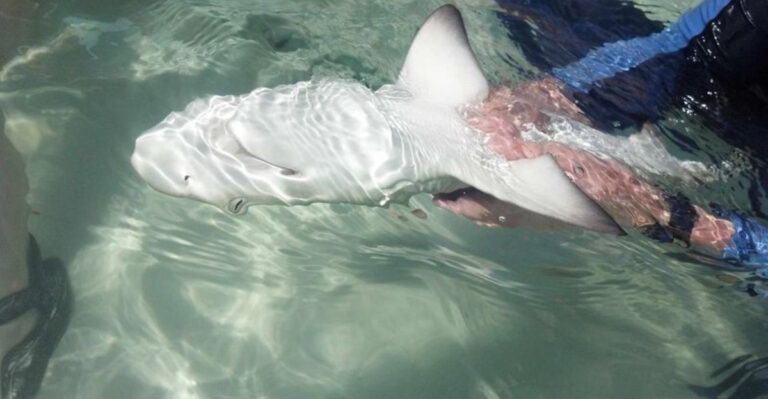17 Fascinating Facts About The Amazon River Dolphin
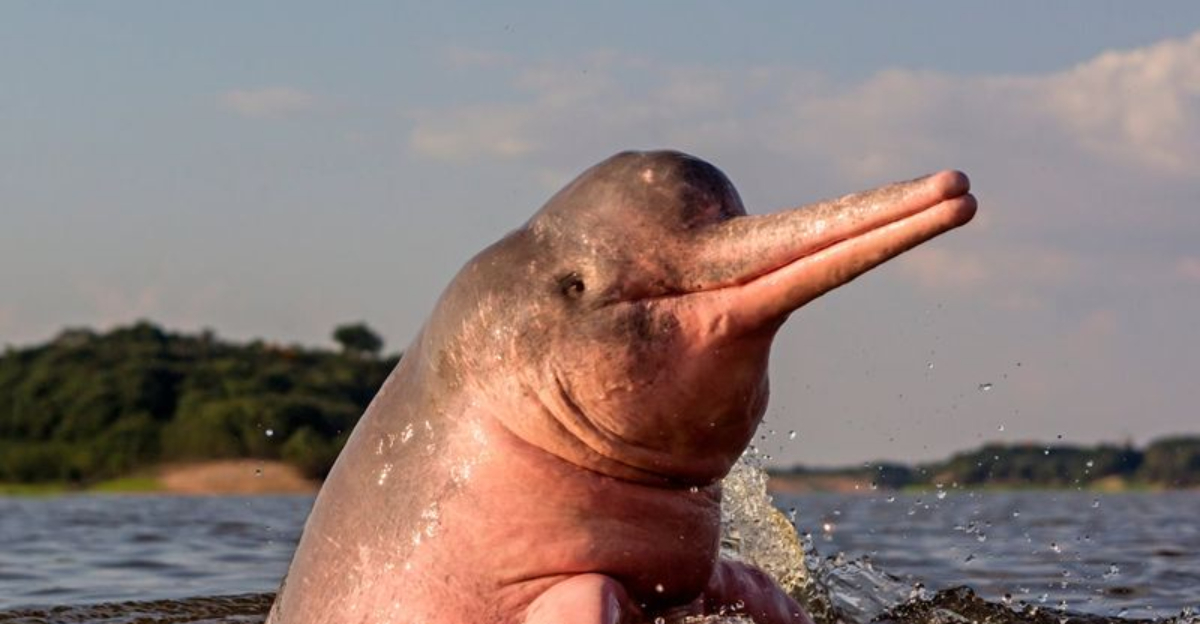
Deep in the waters of the Amazon basin swims one of nature’s most extraordinary creatures – the Amazon River dolphin.
Known for its distinctive pink coloration, this remarkable mammal has captivated scientists and locals alike for centuries.
1. Blushing Beauty
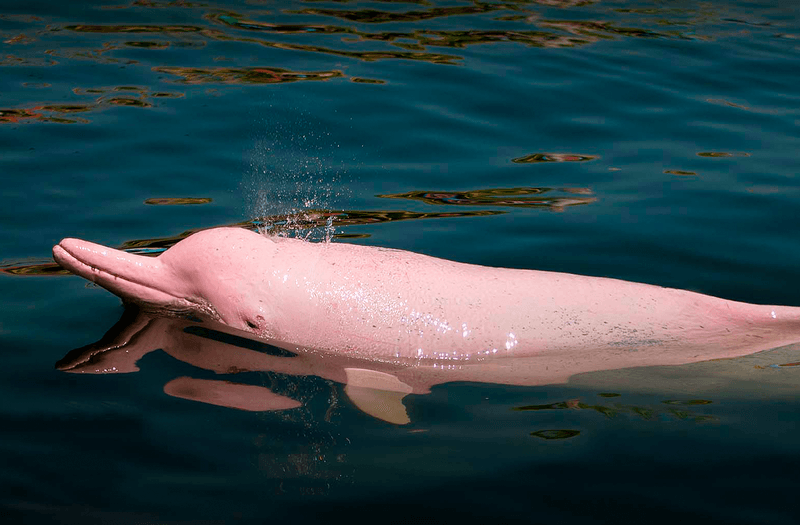
Adult Amazon river dolphins can turn bright pink! Males display the most vibrant coloration, with their rosy hue intensifying during mating season or when excited. This blush happens because blood vessels near their skin dilate when they’re active or emotional.
Young dolphins start life gray and gradually develop their signature color as they mature. Some dolphins remain pale pink or even stay grayish, with just a hint of pink.
Their coloration can vary dramatically among individuals, making each dolphin distinctly recognizable to researchers.
2. Flexible Neck Acrobats
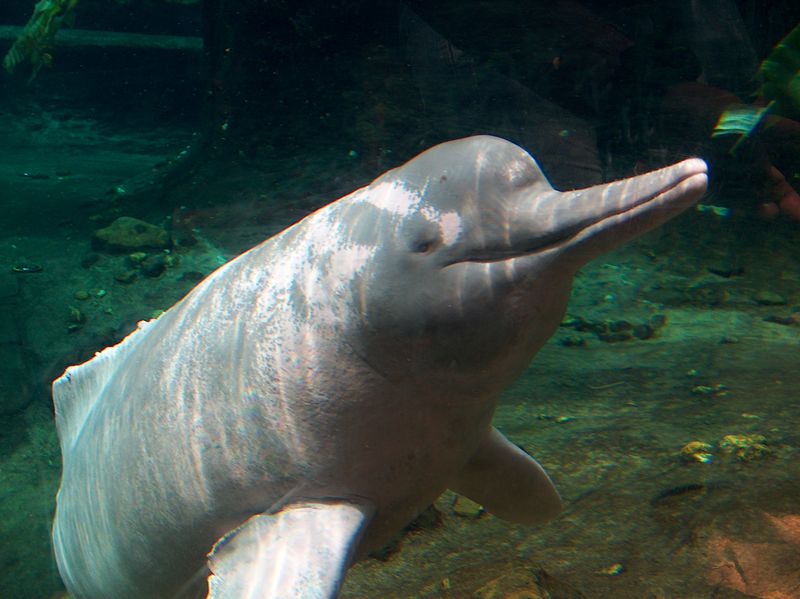
Unlike their ocean-dwelling cousins, Amazon river dolphins possess an extraordinary ability to move their heads in all directions. Their neck vertebrae aren’t fused together, allowing them to bend their necks up to 180 degrees!
This remarkable flexibility helps them navigate through flooded forests and tight spaces during the rainy season. They can twist around trees, maneuver through submerged branches, and hunt fish in complex environments where rigid-necked dolphins would struggle.
This adaptation perfectly suits their labyrinthine rainforest habitat.
3. Sonar Superstars
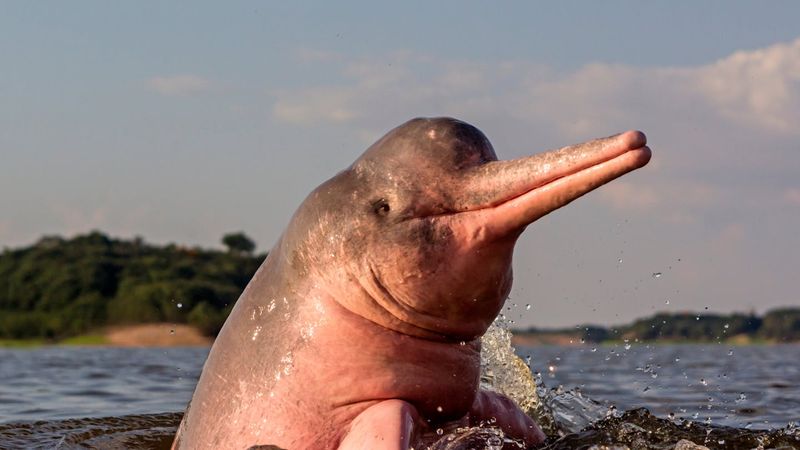
The murky waters of the Amazon River provide almost zero visibility, but river dolphins navigate with extraordinary precision. Their advanced echolocation system sends out sound waves that bounce back, creating detailed mental maps of their surroundings.
Scientists believe their echolocation abilities surpass those of many other dolphin species. A specialized fatty organ in their foreheads, called the melon, focuses these sound beams with remarkable accuracy.
This biological sonar allows them to detect fish hiding in muddy river bottoms and even “see” inside other animals’ bodies!
4. Solitary Swimmers
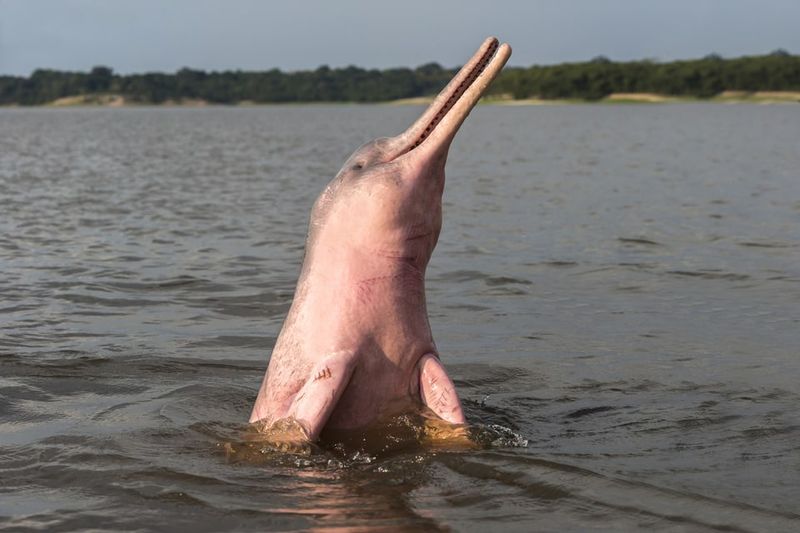
Unlike their ocean relatives who travel in large pods, Amazon river dolphins typically live solitary lives or in small, loose-knit groups of 2-4 individuals. These temporary gatherings usually form during feeding or mating seasons.
Their independent nature reflects their complex river environment, where hunting alone can be more efficient than coordinating with others. During flooding season, they spread throughout the expanded waterways.
When waters recede, more dolphins concentrate in deeper river channels, creating the appearance of social groups that quickly dissolve when conditions change.
5. Freshwater Giants

Stretching up to 8 feet long and weighing as much as 400 pounds, Amazon river dolphins rank among the world’s largest freshwater mammals. Males typically outsize females by about 55%, an unusual degree of sexual dimorphism among cetaceans.
Their robust bodies support powerful muscles needed for navigating strong river currents. Unlike the streamlined bodies of ocean dolphins, river dolphins have stockier builds with pronounced bellies.
Their considerable size doesn’t hamper agility – they remain remarkably nimble, slipping through flooded forests with surprising grace.
6. Tool-Using Talents

Researchers have observed Amazon river dolphins carrying sticks, branches, and even clay pots in their mouths during courtship displays! This represents one of the few documented cases of tool use among wild dolphins.
Males perform elaborate displays while balancing these objects, apparently to impress potential mates. Some scientists believe this behavior demonstrates intelligence and dexterity to females.
The behavior seems culturally transmitted, with young males learning by watching older dolphins. This sophisticated social behavior highlights their remarkable cognitive abilities.
7. Mythical Shapeshifters
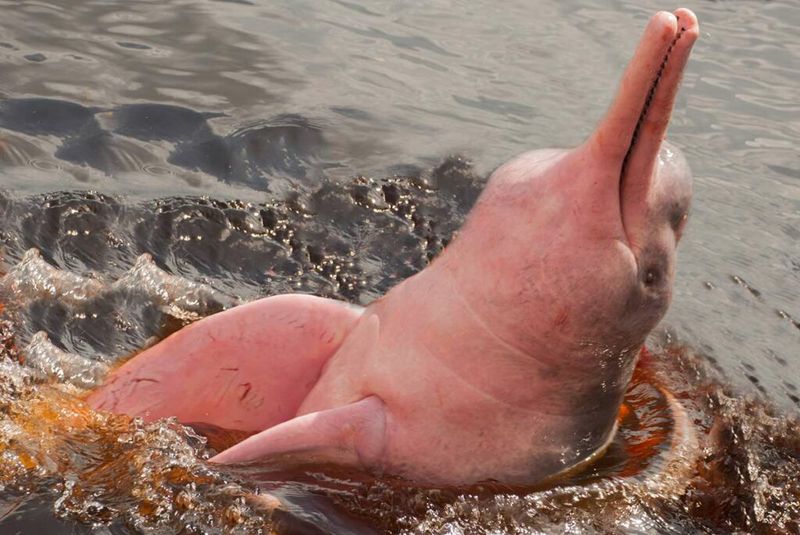
Local Amazonian folklore features the enchanted boto – a river dolphin believed to transform into a handsome young man at night. According to legend, this shapeshifter emerges from the water wearing a white hat (to hide his blowhole) and seduces young women at village festivals.
These myths reflect the dolphin’s mysterious nature and nocturnal activity patterns. Some communities still believe pregnancy without a known father might be the work of a boto. Despite scientific explanations, many riverside communities maintain taboos against harming these creatures, offering them unexpected protection through cultural beliefs.
8. Unusual Teeth Combination
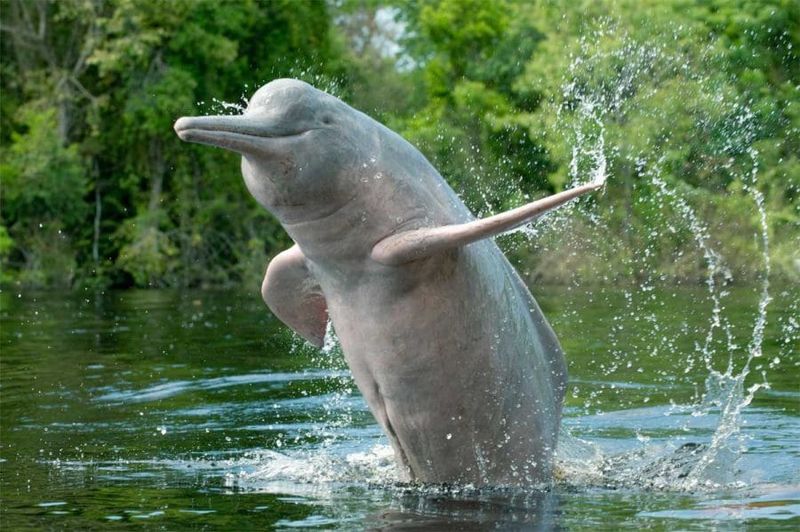
Amazon river dolphins possess a unique dental arrangement not found in other dolphin species. They have two different types of teeth in the same jaw – pointed front teeth for grabbing prey and flat molars in the back for crushing tough-shelled creatures.
This specialized dentition allows them to consume an incredibly diverse diet. Their teeth count ranges from 24-34 per jaw, fewer than ocean dolphins but more specialized. As they age, their teeth often wear down significantly, yet they continue hunting successfully by adapting their feeding techniques to compensate for dental wear.
9. Seasonal Wanderers
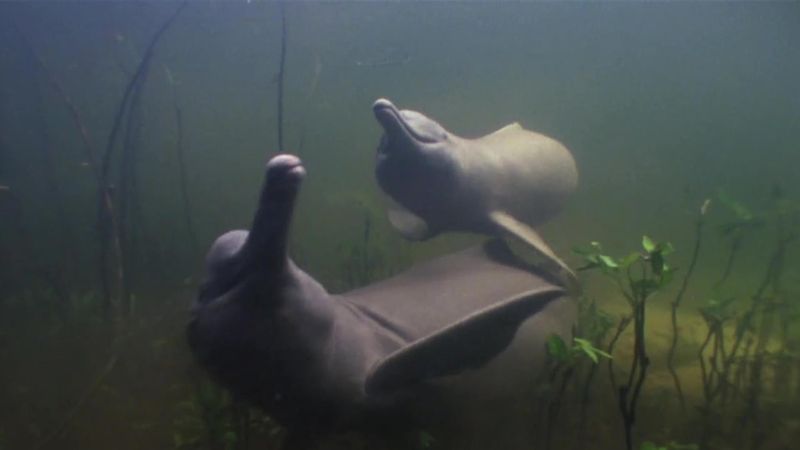
Amazon river dolphins undertake remarkable seasonal migrations not based on breeding or temperature but following the Amazon’s flood cycles. During rainy seasons, water levels can rise over 30 feet, creating vast flooded forests full of fish.
The dolphins follow these rising waters, swimming among treetops to hunt newly accessible prey. They can travel hundreds of miles inland through flooded areas that become completely dry months later.
Their internal navigation system helps them remember complex waterway networks that transform dramatically with the seasons.
10. Bumpy Foreheads
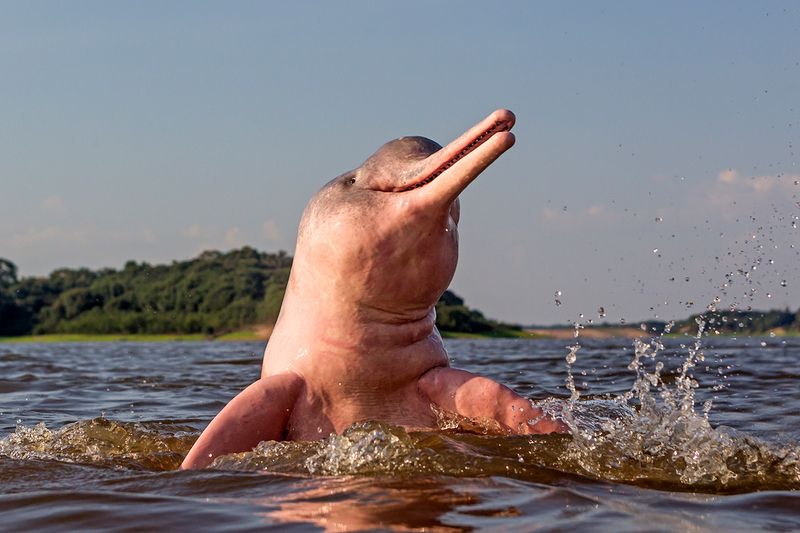
The prominent, bulbous forehead of the Amazon river dolphin isn’t just for show.
This large, oil-filled organ called the melon helps focus sound waves for echolocation in murky waters. Unlike the smooth melons of ocean dolphins, river dolphins often develop bumpy, knobby foreheads as they age.
These distinctive bumps result from scarring from aggressive encounters with other dolphins. Males typically have more pronounced bumps than females. Researchers can identify individual dolphins by their unique bump patterns, similar to how we might recognize people by their facial features.
11. Slow-Motion Swimmers
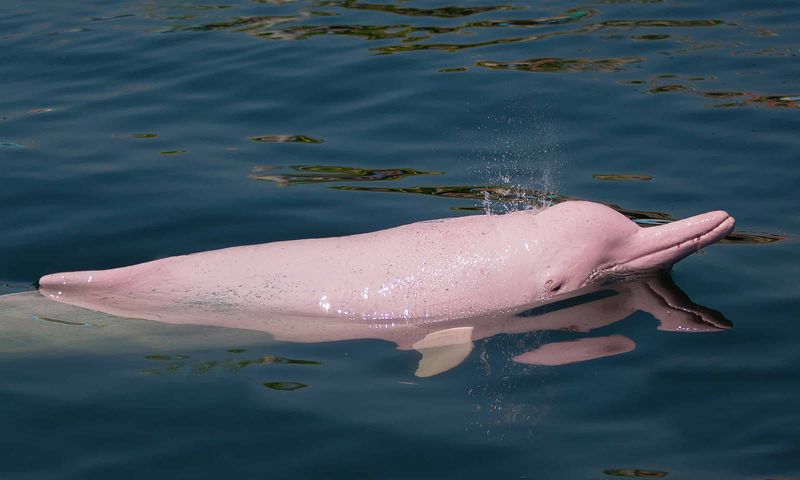
Despite their aquatic agility, Amazon river dolphins are surprisingly slow swimmers compared to their ocean counterparts. They typically cruise at just 1-3 miles per hour, while bottlenose dolphins regularly hit speeds of 20+ mph.
This leisurely pace suits their environment perfectly. Fast swimming isn’t necessary in river systems with abundant prey and few large predators. They conserve energy by moving methodically through their habitat. When needed for quick bursts to catch prey, they can briefly accelerate, but their body structure favors maneuverability over speed.
12. Incredible Longevity
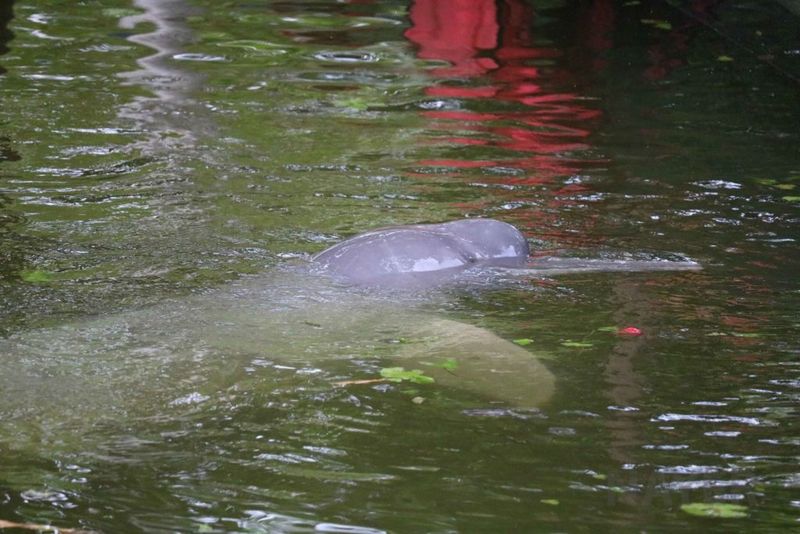
Amazon river dolphins are among the longest-lived freshwater mammals, with documented lifespans reaching 30+ years in the wild. This remarkable longevity occurs despite harsh conditions including seasonal food scarcity and human threats.
Scientists attribute their long lives to several factors: few natural predators, sophisticated immune systems adapted to pathogen-rich environments, and efficient metabolisms.
Females typically outlive males by several years. Their slow reproductive rate – giving birth every 2-3 years – pairs naturally with their extended lifespan.
13. Amazing Breath-Holding
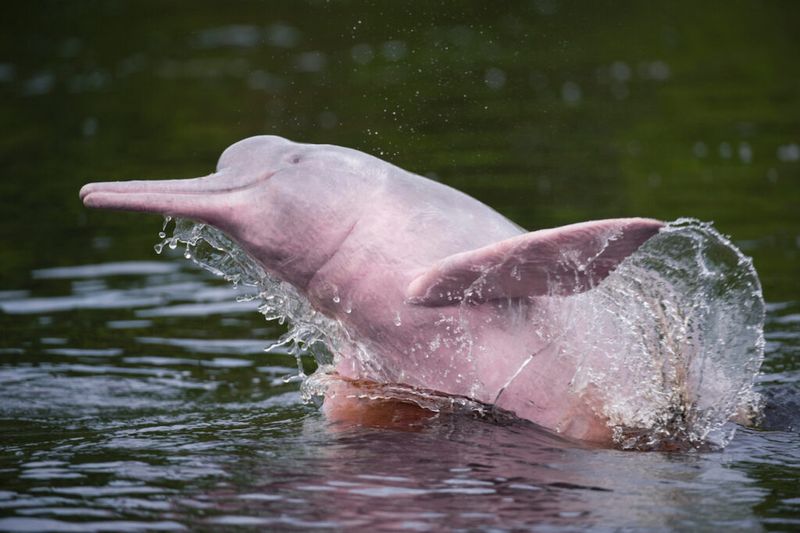
Amazon river dolphins can stay underwater for up to 6 minutes without surfacing for air! This exceptional breath-holding capacity exceeds many other freshwater mammals and helps them during extended hunting dives.
Their specialized physiology includes enhanced oxygen storage in their muscles and blood. Their metabolism slows dramatically underwater, conserving oxygen for vital organs.
Unlike marine mammals with extreme diving adaptations, river dolphins have evolved this ability specifically for navigating complex underwater environments rather than deep diving.
14. Eyes That Work Independently
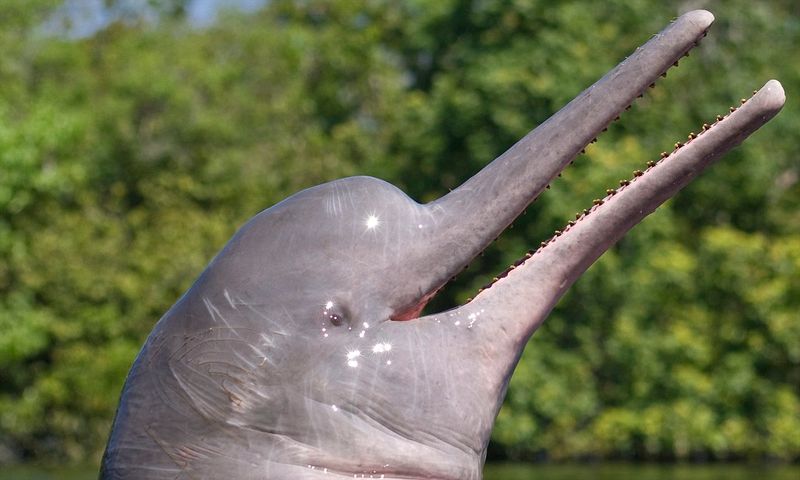
Amazon river dolphins possess the extraordinary ability to move and focus their eyes independently of each other!
This rare adaptation allows them to monitor different areas simultaneously, especially useful in murky waters with potential threats or prey coming from multiple directions.
Despite living in turbid waters with limited visibility, they maintain functional vision. Their eyes sit high on the sides of their heads, providing nearly 360-degree awareness.
While they rely primarily on echolocation for hunting, this independent eye movement gives them supplementary visual information about their complex environment.
15. Color-Changing Capabilities
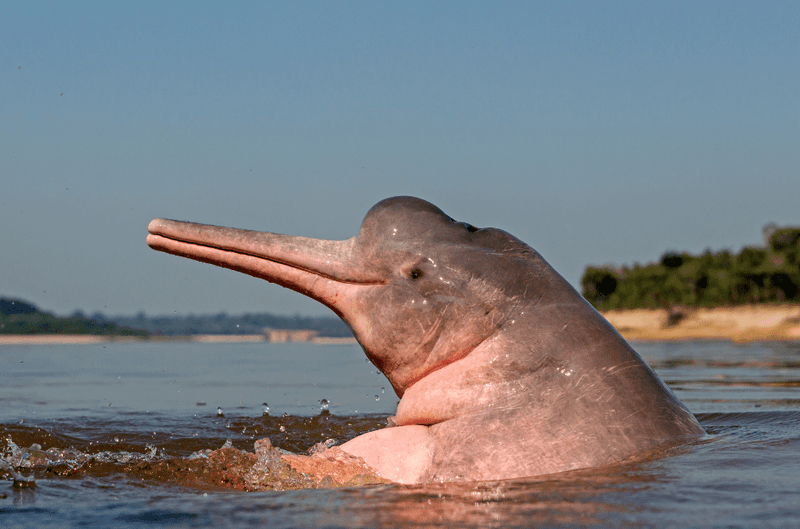
Beyond their famous pink coloration, Amazon river dolphins can actually change their color intensity based on activity level and emotional state.
When excited or engaged in vigorous activity, blood rushes to their skin, making their pink hue more vibrant.
During calm periods, they may appear much paler. This dynamic coloration serves as a visual indicator of their physiological state.
Some scientists believe this involuntary “blushing” may play a role in social communication among dolphins. Temperature changes can also affect their coloration, with dolphins appearing pinker in warmer waters.
16. Impressive Brain Size
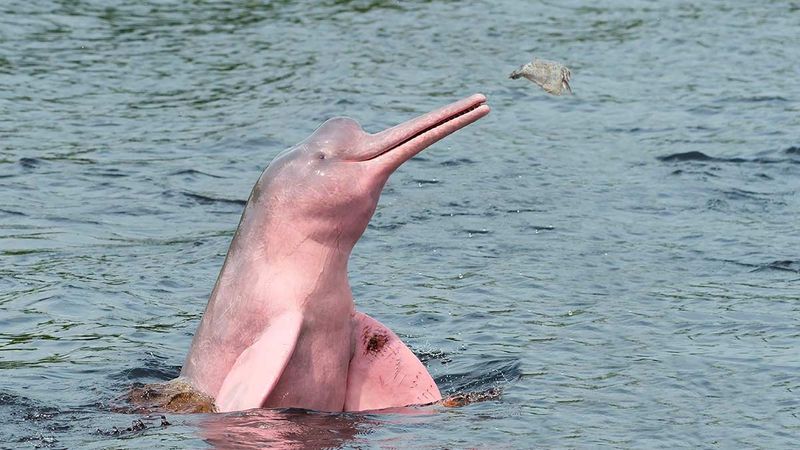
Amazon river dolphins possess remarkably large brains relative to their body size, with brain-to-body mass ratios comparable to those of great apes. Their brain structure shows expanded areas for sensory processing, particularly for interpreting complex echolocation information.
Their cerebral cortex – the brain region associated with problem-solving and self-awareness—is highly developed.
Despite living in isolated freshwater environments, they’ve evolved cognitive abilities rivaling their marine relatives. Their intelligence manifests in their tool use, complex social behaviors, and ability to adapt hunting strategies to changing river conditions.
17. Unusual Fishing Partnerships
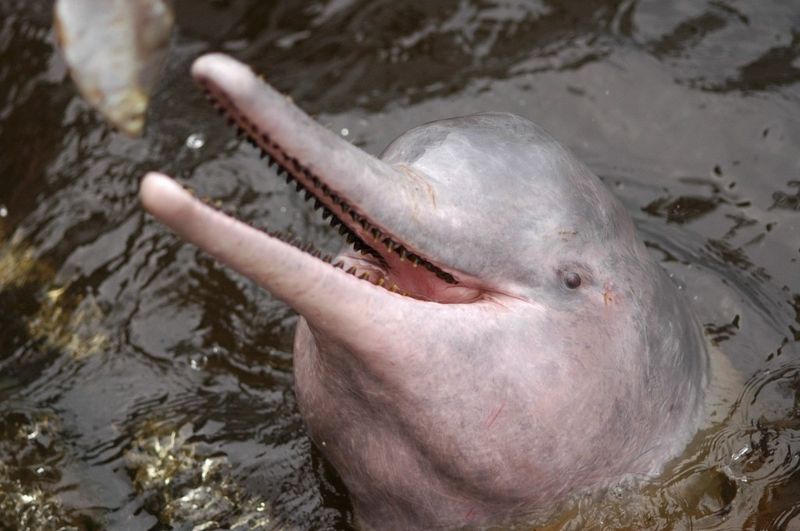
In certain regions of Brazil, Amazon river dolphins have formed remarkable cooperative hunting relationships with local fishermen. The dolphins herd fish toward fishermen’s nets, benefiting from disoriented prey that escape the nets.
This behavior isn’t taught by humans but appears to be a naturally evolved mutualistic relationship. The dolphins seem to recognize specific boats and fishermen they’ve successfully cooperated with before.
Some fishing communities consider these dolphins good luck and have taboos against harming them. This relationship represents one of the few documented cases of wild dolphin-human cooperative hunting.

